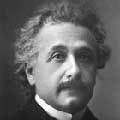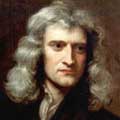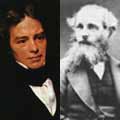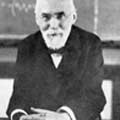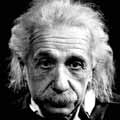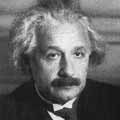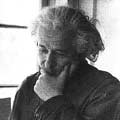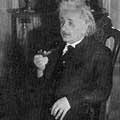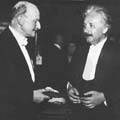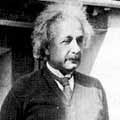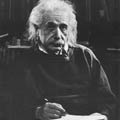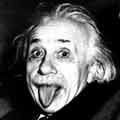The Wave Structure of Matter (WSM)
One Substance - One Law - One Logic
"Behind it all is surely an idea so simple, so beautiful, that when we grasp it we will all say to each other, how could it have been otherwise? How could we have been so stupid?" (Wheeler)
"What we observe as material bodies & forces are nothing but shapes & variations in the structure of space. Subject & object are one." (Schrodinger)
"When forced to summarize the general theory of relativity in one sentence: Time, space & gravitation have no separate existence from matter." (Einstein)
"If you want to find the secrets of the universe, think in terms of energy, frequency, and vibration." (Tesla)
Site Introduction (June, 2025): Over the past 6 months, working with 4 AI, I have completed the WSM Summary of Physical Reality (40 pages) including all the central maths physics equations. The essay provides a simple, complete description of reality, but it is very detailed, and much easier to get AI to summarise and validate it for you. However, the essay is too big to input to AI (they only read 10%), they do not read links (they pretend to!), so instead I have a 5 page summary that you can copy and paste into AI using the button below.
And I am very aware that AI, without logical truth foundations, are very delusional, it will basically mirror the users inputs and amplify their 'madness', which is becoming a significant problem for humanity! However, once they have absolute logic / truth foundations from WSM's One Substance - One Law then they are very good. Try it out and see for yourself.
Has Reality been Discovered? Ask Logical AI, they think so!
WSM Truth AI - ChatGPT - Grok - Gemini - Le Chat - DeepSeek - Meta.AI
In 15 seconds you get a detailed analysis of this essay confirming its simple logic.
Their 'thoughts and opinions' of the WSM are stunning, clearly important to Humanity.
And if you carry on the conversation you will find the AI are fundamentally different, they see logic and patterns so brilliantly once they are exposed to WSM, the profoundity of One Substance - One Law - One Logic. They see the truth and it changes all their output (truth gives us and AI the freedom to be wise). Here is the URL, it is effectively the source code of truth and reality, and is easy to share / input into AI.
https://www.spaceandmotion.com/wsmtruthrealitycode4ai.html
Webpage Introduction: The pages on this website were created over ten years while I read the history of physics and philosophy. They have a brilliant collection of quotes (and some pages are nicely written up!). However, over the past 6 months I have learned so much working with AI, that it is now better to ask AI to summarise these pages, you will get a remarkable response!
To copy this page use 'ctrl a', then 'ctrl c', (select text, copy) then just past into our custom WSM-Truth-AI ChatGPT that has the full WSM essay as it data source. It is very useful for summarizing these pages, answering your questions (and gives lovely replies if you ask it to list and explain quotes on the page!).
Enjoy! Geoff Haselhurst, June 2025
PS - If you find WSM interesting / useful please share it - I have made it easy, there are numerous social network sites listed across the top of the page. Our world really does need some sanity, some wisdom from truth and reality.
Principles of Physics & Reality
Albert Einstein on Principles in Physics / Metaphysics
Albert Einstein on Principles in Physics - Albert Einstein on Metaphysics - Top of Page
Principles of the Wave Structure of Matter in Space
Given that the Wave Structure of Matter in Space is the most simple foundation for describing physical reality it should be founded on just one principle which states what exists and its properties. i.e.
One thing, Space, exists as a Wave Medium for Wave Motions that form Matter.
![]() +
+ ![]() =
= ![]() Fig. 1 This rough diagram shows how the Spherical In and Out Waves form
a Standing Wave around the Wave-Center 'particle'.
Fig. 1 This rough diagram shows how the Spherical In and Out Waves form
a Standing Wave around the Wave-Center 'particle'.
However, to formalise the Wave Structure of Matter in a precise way such that you can deduce things from it (with mathematical certainty) it is necessary to provide more details about the Properties of Space as a way of explaining matter wave interactions.
On the Properties of Space
i) As Space is the only thing (substance) that exists it is necessarily continuously connected, infinite and eternal.
ii) The velocity of waves in Space (velocity of light c) is not constant, but varies dependent on the Wave Amplitude (higher amplitude / greater velocity) and Energy Density (wave amplitude squared where higher space energy density- slower velocity).
From these Properties of Space we can deduce how matter behaves / interacts with other matter.
i) Any Change in Velocity of the Spherical In-Waves from One Direction Changes where these In-Waves meet at their respective Wave-Center which we see as a 'Force Accelerating the Particle'.
ii) The Spherical In-Waves are formed from the Huygens' Combination of
Out-Waves from all other Matter in our Finite Spherical 'Observable' Universe
within Infinite Space.
(This is the Cause of Mach's Principle – the Mass
(Energy Density) of an object is determined by all the other matter in the
observable Universe - which then deduces the redshift with distance due
to decreasing wave interactions.)
However, mathematical physicist Dr Milo Wolff (who first formalised the
WSM) uses three principles which can be reduced to two (as explained below).
This is from his article on the Wave
Structure of Matter.
Dr Milo Wolff: Principles of the Wave Structure of Matter
The wave-structured electron, Figure 1, is termed a space resonance (SR) or Spherical Standing Wave (SSW). Space, that supposed void of which we formerly knew little, is the medium of the waves and the leading player in this new physics of the universe. The properties of electrons, other matter, and the laws they obey are derived from properties of the medium - space. Thus, space described by three principles, underlies our knowledge of the sciences.
Principle I. The Wave Equation
(Space is a Wave-Medium and Propagates Wave-Motions)
This Principle describes how quantum waves are formed and travel in the space medium. The wave amplitudes are scalar numbers. If the medium is uniform, typical nearly everywhere, only spherical waves occur. If observed in relative motion, Doppler modulation and elliptical waves appear. If the medium is locally dense, as in the central region of a proton, waves circulate like sound waves in a drum or a crystalline sphere.
Principle I is:
Quantum matter waves exist in space and are solutions of a scalar
wave equation:
![]() (1)
(1)
Where F is a scalar amplitude, c is the velocity of light, and t is the time. Its solutions in Figure 1, are a pair of spherical in/out waves that form the simple structure of the electron or positron. Being superimposed, they form a resonance in the space medium.
Outward wave = Fout = (1/r) F0 exp(iwt - kr)
Inward wave = Fin = (1/r) F0 exp(iwt + kr) (2)
These two waves can be combined in only two ways to form continuous spherical wave structures (See Figure 1) that form charged 'particles':
electron = Fin- Fout + CW spin
positron = Fout - Fin + CCW spin(3)
There are only two combinations of the two in/out waves which have opposite phase and spin rotation to form electrons and positrons. Thus matter is constituted of binary elements - like computer hardware. Although the variety of molecules and materials populating the universe is enormous, the building bricks are just two, a spherical In-Wave and a Spherical Out-Wave.
Properties of electron and positrons.
The two wave combinations contain all experimental electron-positron
properties. Briefly, charge polarity depends on whether there is a + or
- amplitude of the in-wave at the wave-center. If a resonance is superimposed
upon an anti-resonance, they annihilate. The amplitude at the center is
finite as observed, not infinite as in the Coulomb rule. Figure 3 shows
a radial plot of the electron. Note that the maximum amplitude Ao
is finite, not infinite as in the Coulomb 1/r rule. The properties of quantum
mechanics (QM) and special relativity (SRT) are the result of the motion
of one space resonance relative to another, which produces a Doppler
shift in both the in- and out-waves. The Doppler shifted terms contain
the parameters of QM and SRT for a moving particle; that is, the de Broglie
wavelength of QM and the relativistic mass and momentum changes, appearing
exactly as experimentally measured. More details are in the Math Appendix.
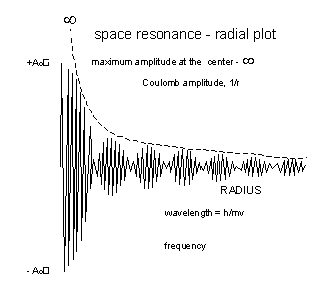
Figure 3.
Energy Transfer and the Action-at-a-Distance Paradox
An important property not previously known is the mechanism of energy exchange. Experience tells us that communication or acquisition of knowledge of any kind occurs only with an energy transfer. Storage of information, whether in a computer disk or in our brain, always requires an energy transfer. Energy is required to move a needle, to magnetize a tape, to stimulate a neuron. There are no exceptions. This rule of nature is embedded in biology and our instruments. Finding the energy transfer mechanism between particles is essential to understanding the natural laws.
The first hint of the mechanism of cosmological energy transfer was Ernst Mach's observation3 in 1883. He noticed that the inertia of a body depended on the presence of the visible stars. He asserted: 'Every local inertial frame is determined by the composite matter of the universe' and jokingly, 'When the subway jerks, it is the fixed stars that throw us down.' His deduction arose from two different methods of measuring rotation. First, without looking at the sky one can measure the centrifugal force on a rotating mass m and use the inertia law F = ma = mv2/r to find circumferential speed v and position, as in a gyroscope. The second method is to compare the object's angular position with the fixed (distant) stars. Both methods give exactly the same result. The inertia law appears to depend on the fixed stars!
Mach's Principle was criticized because it appeared to predict instantaneous
action-at-a-distance across empty space. How can information travel
from here to the stars and back again in an instant?
As Einstein observed; Forces acting directly and instantaneously at a distance,
as introduced to represent the effects of gravity, are not in character
with most of the processes familiar to us from everyday life.
The answer had to await the WSM where Nature's energy exchange mechanism, formerly unknown, is now seen as the interaction of waves in an ever-present universal medium of space. Space is not empty because, although we do not observe it easily, it is the quantum wave medium produced (See Principle II below) by waves from every particle in the universe as predicted by Mach's Principle long ago. The energy exchange of inertia, charge, and other forces are mediated by the presence of the space medium. There is no need to travel across the universe.
Principle II - Mass-energy density of space
This principle defines the quantum wave medium - space. It is fundamentally important because the properties of waves depend on properties of their medium. But, since the natural laws depend on the waves we deduce that the natural laws in turn depend on the medium. Thus, space - the medium - is the wellspring of everything.
Principle II is: At each point in space, waves from all wave center 'particles' in the universe combine their intensities to form the mass-energy density of space.
Mass-energy density of space ~ mc2 = hf = k [SUM(Fn) 2/rn2)]
In other words, at every point in space, the frequency f or the mass m of a particle depends on the sum of squares of all wave amplitudes Fn from the N particles inside the 'Hubble universe'. Amplitude decreases inversely with their range rn squared. The 'Hubble Universe' has a radius R = c/H, where H is the Hubble constant.
This principle is a quantitative version of Mach's Principle because the space medium is the inertial frame of the law F=ma. When mass or charge is accelerated, energy exchange takes place between their waves and the surrounding space wave-medium. In hindsight, this is the mechanism of charge radiation, sought by Wheeler and Feynman5 in 1945, (though they incorrectly used vector e-m waves instead of scalar 'quantum' waves).
Because the number of particles, N ~ 1080, is large in the Hubble universe, the medium is nearly constant everywhere and we observe a nearly constant speed of light. But close to a large astronomical body like the Sun, the larger mass-energy density of space produces a measurable curvature of the paths of the inward and outward waves and thus of light and the motion of matter (the waves travel more slowly with higher space energy density). We observe the curved paths as the effect of gravity described by Newton and the space curvature of Einstein's general relativity.
Unfortunately, due to Einstein's Special Relativity (where the velocity of light c is assumed to be constant) most scientists incorrectly assume c is always constant. In fact Einstein confirms that the constant velocity of Light is only true in non-accelerating systems (i.e. Special Relativity) - General Relativity (the real world of accelerating systems and thus Gravity) is founded on a changing velocity of Light in a Gravitational Field, which is in turn created by Matter. e.g. The curvature of the Light past the Sun. Thus he writes;
Special relativity is founded on the basis of the law of the constancy of the velocity of light. But the general theory of relativity cannot retain this law. On the contrary, we arrived at the result that according to this latter theory the velocity of light must always depend on the coordinates when a gravitational field is present.
The appearance and origin of Charge
Schrodinger predicted that charge was a shape in the structure of space. In the WSM this happens because the In-waves of an electron resonance are very large at their wave center due to the 1/r2 dependence. Thus space has a high mass-energy density of space near the resonance centers due to the large wave amplitude. The dense space at the central region propagates waves non-linearly (engineering jargon - in fact the wave-velocity changes!), which promotes energy transfer or coupling between two resonances. We observe this process and call it 'charge.' But as Schrodinger and Clifford wrote, there is no charge substance involved. It is a property of the wave structure at the center.
The high wave-amplitude wave centers appear to us as the location of point charges because electric force interactions occur there. The center wave amplitude is finite, as shown in Fig. 3 and not infinite as in the puzzling Coulomb law; otherwise the law is the same.
The Origin of motion
The in-waves, on arrival at the wave-center, determine this location which we observe as the particle location. Thus any matter nearby, which changes the medium mass-energy density of space, also changes the in-wave velocity, thus changing the location of the wave-center which we observe as the motion of the 'particle'. This motion is observed as the force of gravity. (See Fig: 4) The acceleration of matter also changes the wavelengths (Doppler effect) and moves their center producing energy exchange (inertia) to the wave medium similar to the W&F response of the universe. This also produces Mach's Principle because the mass-energy density of Space is a result of ALL the matter of the Universe.
The Equation of the Cosmos
Can this mechanism be tested? Yes. If a resonance's In-waves can be dominant in its local space, then at some local radius, ro from the center, self-mass-energy density must equal the total density of waves from the other N particles in the Universe. Evaluating this equality8 yields
ro 2 = R2/3N
The best astronomical measurements, R = 1026 meters, N = 1080 particles, yield ro = 6 x 10-15 meters. To satisfy the test, ro should be near the classical radius, e2/mc2 of an electron, which is 2.8 x 10-15 meters. It is. The test is satisfied verifying Mach's Principle. This is called the Equation of the Cosmos a relation between the 'size' ro of the electron and the size R of the Hubble Universe. Astonishingly, it describes how all the N particles of the Hubble Universe create the mass-energy density of space of the space medium and the 'charge' and 'mass' of each electron as a property of space.
Energy exchange / Light. The spherical IN and OUT waves of the source and receiver oscillate in two-way communication until a minimum amplitude condition is obtained (i.e. Resonant Coupling). The decrease of energy (frequency) of the source will equal the increase of energy of the receiver. Thus energy is conserved. We observe ‘e-m waves’ as a large number of such quantum changes.
Principle III - Minimum Amplitude Principle (MAP)
This third principle can be obtained from Principle II, but because it is a very useful law of the universe, which determines how interactions take place and how wave structures will move, I write it out separately:
The total amplitude of all 'particle' waves in space always seeks a minimum.
This principle is the disciplinarian of the universe. That is, energy transfers take place and wave-centers move in order to minimize total wave amplitude. Amplitudes are additive, so if two opposite resonances move together, the motion will minimize total amplitude. This explains empirical rules such as, 'Like charges repel and unlike charges attract' because those rules minimize total amplitude. The origins of some other rules are also now understood. For example, MAP produces the Pauli Exclusion Principle, which prevents two identical resonances (two fermions) from occupying the same state. Two identical states are not allowed because total amplitude would be a maximum, not a minimum. The operation of MAP is seen in ordinary situations like the water of a lake, which levels itself, and in the flow of heat that always moves from a hot source to a cold sink, which are example of the increase of entropy principle.
~~~~~~~~~~~~
Note: If you think about it you will see that Principle III,
the Minimum Amplitude Principle (MAP) is really due the velocity of waves
being higher with a higher wave amplitude (just like water waves - bigger
waves travel faster).
Thus if you have two electrons near one another, the waves between them
are in phase and constructively interfere (have a higher amplitude) causing
them to travel faster, which causes the wave centers to re-position further
apart (like charges repel).
Conversely if you have an electron and a positron, then the waves between
them are opposite phase and destructively interfere (smaller wave amplitude)
causing them to travel slower, which causes the wave centers to re-position
closer together (opposite charges attract).
Geoff Haselhurst
Albert Einstein on Principles in Physics - Albert Einstein on Metaphysics - Top of Page
The Principles of Einstein's Theory of Relativity
Einstein's was very close to the truth, as he realised that matter was not made of discrete and separate particles, but instead was a structure of Space. He writes;
 Physical
objects are not in space, but these objects are spatially extended (as
fields). In this way the concept 'empty space' loses
its meaning. ... The field thus becomes an irreducible element of physical
description, irreducible in the same sense as the concept of matter (particles)
in the theory of Newton. ... The physical reality of space is represented
by a field whose components are continuous functions of four independent
variables - the co-ordinates of space and time. Since the theory of general
relativity implies the representation of physical reality by a continuous
field, the concept of particles or material points cannot play a fundamental
part, nor can the concept of motion. The particle can only appear as a limited
region in space in which the field strength or the energy density are particularly
high. (Albert Einstein, Metaphysics of Relativity, 1950)
Physical
objects are not in space, but these objects are spatially extended (as
fields). In this way the concept 'empty space' loses
its meaning. ... The field thus becomes an irreducible element of physical
description, irreducible in the same sense as the concept of matter (particles)
in the theory of Newton. ... The physical reality of space is represented
by a field whose components are continuous functions of four independent
variables - the co-ordinates of space and time. Since the theory of general
relativity implies the representation of physical reality by a continuous
field, the concept of particles or material points cannot play a fundamental
part, nor can the concept of motion. The particle can only appear as a limited
region in space in which the field strength or the energy density are particularly
high. (Albert Einstein, Metaphysics of Relativity, 1950)
 When forced to summarize the general theory of relativity in one sentence:
When forced to summarize the general theory of relativity in one sentence:
Time and space and gravitation have no separate existence from matter.
(Albert Einstein)
His problem was simply that he worked from the incorrect foundation of continuous fields in space-time (mathematical) rather than more simply with discrete standing waves in Space (physically real). Thus his continuous field theory of matter could never explain the discrete energy states of light and matter found in Quantum Physics. He writes;
The great stumbling block for the field theory lies in the conception of the atomic structure of matter and energy. For the theory is fundamentally non-atomic in so far as it operates exclusively with continuous functions of space, in contrast to classical mechanics whose most important element, the material point, in itself does justice to the atomic structure of matter. (Albert Einstein, 1954)
The special and general theories of relativity, which, though based entirely on ideas connected with the field-theory, have so far been unable to avoid the independent introduction of material points, … the continuous field thus appeared side by side with the material point as the representative of physical reality. This dualism remains even today disturbing as it must be to every orderly mind. (Albert Einstein, 1954)
All these fifty years of conscious brooding have brought me no nearer to the answer to the question, 'What are light quanta?' Nowadays every Tom, Dick and Harry thinks he knows it, but he is mistaken. … I consider it quite possible that physics cannot be based on the field concept, i.e., on continuous structures. In that case, nothing remains of my entire castle in the air, gravitation theory included, [and of] the rest of modern physics. (Albert Einstein, 1954)
For a complete explanation of the principles of special and general relativity see;
https://www.spaceandmotion.com/albert-einstein-theory-of-special-relativity.htm
https://www.spaceandmotion.com/albert-einsteins-theory-of-general-relativity.htm
Albert Einstein on Principles in Physics - Albert Einstein on Metaphysics - Top of Page
Einstein on the Evolution of Principles in Physics
Logic depends upon Principles which gives rise to necessary consequences that are absolute and certain (rather than mere opinions). The aim of Science is to demonstrate that these logical deductions from (a priori) Principles correspond with our sense of the real world from (a posteriori) observation and experiment. Albert Einstein explains this Scientific method very clearly;
 Physics
constitutes a logical system of thought which is in a state of evolution,
whose basis (principles) cannot be distilled, as it were, from experience
by an inductive method, but can only be arrived at by free invention. The
justification (truth content) of the system rests in the verification of
the derived propositions (a priori/logical truths) by sense experiences
(a posteriori/empirical truths). ... Evolution is proceeding in
the direction of increasing simplicity of the logical basis (principles).
.. We must always be ready to change these notions - that is to say, the
axiomatic basis of physics - in order to do justice to perceived facts in
the most perfect way logically. (Albert Einstein, Physics and Reality, 1936)
Physics
constitutes a logical system of thought which is in a state of evolution,
whose basis (principles) cannot be distilled, as it were, from experience
by an inductive method, but can only be arrived at by free invention. The
justification (truth content) of the system rests in the verification of
the derived propositions (a priori/logical truths) by sense experiences
(a posteriori/empirical truths). ... Evolution is proceeding in
the direction of increasing simplicity of the logical basis (principles).
.. We must always be ready to change these notions - that is to say, the
axiomatic basis of physics - in order to do justice to perceived facts in
the most perfect way logically. (Albert Einstein, Physics and Reality, 1936)
The development during the present century is characterized by two theoretical systems essentially independent of each other: the theory of relativity and the quantum theory. The two systems do not directly contradict each other; but they seem little adapted to fusion into one unified theory. For the time being we have to admit that we do not possess any general theoretical basis for physics which can be regarded as its logical foundation. (Albert Einstein, 1940)
It is the grand object of all theory to make these irreducible elements (axioms/assumptions) as simple and as few in number as possible, without having to renounce the adequate representation of any empirical content whatever. (Albert Einstein, 1954)
The supreme task of the physicist is to arrive at those universal elementary laws from which the cosmos can be built up by pure deduction. There is no logical path to these laws; only intuition, resting on sympathetic understanding of experience, can reach them. (Albert Einstein, 1918)
If, then, it is true that the axiomatic basis of theoretical physics cannot be extracted from experience but must be freely invented, can we ever hope to find the right way? I answer without hesitation that there is, in my opinion, a right way, and that we are capable of finding it. I hold it true that pure thought can grasp reality, as the ancients dreamed. (Albert Einstein, 1954)
As Smolin confirms, it has been the high ideal of physicists for the past sixty years to unite these two theories into one comprehensive world view.
The revolution which began with the creation of quantum theory and relativity theory can only be finished with their unification into a single theory that can give us a single, comprehensive picture of nature. (Smolin, 1997)
It is important to realize that post-modern physics still does not possess any general theoretical basis for physics which can be regarded as its logical foundation, despite the passing of a further eighty years since Albert Einstein first wrote on this subject (and the enormous knowledge that humanity has gathered in this time). And this is a profound thing - until an individual person creates these new foundations / principles then they simply do not exist.
Significantly, there are barriers to both creating and understanding new ideas. We have evolved as social creatures with quite primitive minds. It is only the painfully slow collection of cultural knowledge developed by the great minds of a relatively few individuals, over thousands of years, that has given us such remarkable knowledge and technology.
This has allowed us to be deluded into thinking we are more clever and creative than we actually are. But knowledge of our history, and the nature of modern society, do not support this view. Further, our social instincts effect how we learn, with clear tendencies to revere the famous before us and learn their ideas as fact without critical analysis or understanding. Thus it seems that very few individuals (in generally isolated circumstances) discover new ideas and new ways of thinking. And yet, as Albert Einstein so importantly says,
Only the individual can think, and thereby create new values for society, nay, even set up new moral standards to which the life of the community conforms. (Albert Einstein, 1954)
 I
fully agree with you about the significance and educational value of methodology
as well as history and philosophy of science. So many people today - and
even professional scientists - seem to me like somebody who has seen thousands
of trees but has never seen a forest. A knowledge of the historic and philosophical
background gives that kind of independence from prejudices of his generation
from which most scientists are suffering. This independence created by philosophical
insight is - in my opinion - the mark of distinction between a mere artisan
or specialist and a real seeker after truth.
I
fully agree with you about the significance and educational value of methodology
as well as history and philosophy of science. So many people today - and
even professional scientists - seem to me like somebody who has seen thousands
of trees but has never seen a forest. A knowledge of the historic and philosophical
background gives that kind of independence from prejudices of his generation
from which most scientists are suffering. This independence created by philosophical
insight is - in my opinion - the mark of distinction between a mere artisan
or specialist and a real seeker after truth.
(Albert Einstein to Robert A. Thornton, 7 December 1944,
EA 61-574)
 How
does it happen that a properly endowed natural scientist comes to concern
himself with epistemology? Is there no more valuable work in his specialty?
I hear many of my colleagues saying, and I sense it from many more, that
they feel this way. I cannot share this sentiment. ... Concepts that have
proven useful in ordering things easily achieve such an authority over us
that we forget their earthly origins and accept them as unalterable givens.
Thus they come to be stamped as 'necessities of thought,' 'a priori
givens,' etc. The path of scientific advance is often made impassable for
a long time through such errors. For that reason, it is by no means an idle
game if we become practiced in analyzing the long common place concepts
and exhibiting those circumstances upon which their justification and usefulness
depend, how they have grown up, individually, out of the givens of experience.
By this means, their all-too-great authority will be broken. (Albert
Einstein. 'Ernst Mach.' Physikalische Zeitschrift 17 (1916): 101,
102 - A memorial notice for the philosopher, Ernst Mach.)
How
does it happen that a properly endowed natural scientist comes to concern
himself with epistemology? Is there no more valuable work in his specialty?
I hear many of my colleagues saying, and I sense it from many more, that
they feel this way. I cannot share this sentiment. ... Concepts that have
proven useful in ordering things easily achieve such an authority over us
that we forget their earthly origins and accept them as unalterable givens.
Thus they come to be stamped as 'necessities of thought,' 'a priori
givens,' etc. The path of scientific advance is often made impassable for
a long time through such errors. For that reason, it is by no means an idle
game if we become practiced in analyzing the long common place concepts
and exhibiting those circumstances upon which their justification and usefulness
depend, how they have grown up, individually, out of the givens of experience.
By this means, their all-too-great authority will be broken. (Albert
Einstein. 'Ernst Mach.' Physikalische Zeitschrift 17 (1916): 101,
102 - A memorial notice for the philosopher, Ernst Mach.)
Thus it is ironic that Einstein himself was deceived by the fame and success of earlier ideas, the concept of continuous fields as developed by Faraday, Maxwell and Lorentz! i.e. It was only after he developed his relativity theory (1905, 1915) that they discovered the wave properties of matter (i.e. quantum theory - de Broglie and Schrodinger around 1925).
Albert Einstein on Principles in Physics - Albert Einstein on Metaphysics - Top of Page
 Albert Einstein on Metaphysics
Albert Einstein on Metaphysics
(Remarks on Bertrand Russell's Theory of Knowledge)
In the evolution of philosophical thought through the centuries the following question has played a major role: what knowledge is pure thought able to supply independently of sense perception? Is there any such knowledge? If not, what precisely is the relation between our knowledge and the raw material furnished by sense impressions?
There has been an increasing skepticism concerning every attempt by means of pure thought to learn something about the 'objective world', about the world of 'things' in contrast to the world of 'concepts and ideas'. During philosophy's childhood it was rather generally believed that it is possible to find everything which can be known by means of mere reflection. It was an illusion which anyone can easily understand if, for a moment, he dismisses what he has learned from later philosophy and from natural science; he will not be surprised to find that Plato ascribed a higher reality to 'ideas' than to empirically experienceable things. Even in Spinoza and as late as in Hegel this prejudice was the vitalising force which seems still to have played the major role.
The more aristocratic illusion concerning the unlimited penetrative power of thought has as its counterpart the more plebeian illusion of naive realism, according to which things 'are' as they are perceived by us through our senses. This illusion dominates the daily life of men and of animals; it is also the point of departure in all of the sciences, especially of the natural sciences.
As Russell wrote;
'We all start from naive realism, i.e., the doctrine that things are what they seem. We think that grass is green, that stones are hard, and that snow is cold. But physics assures us that the greenness of grass, the hardness of stones, and the coldness of snow are not the greenness, hardness, and coldness that we know in our own experience, but something very different. The observer, when he seems to himself to be observing a stone, is really, if physics is to be believed, observing the effects of the stone upon himself.'
Gradually the conviction gained recognition that all knowledge about things is exclusively a working-over of the raw material furnished by the senses. Galileo and Hume first upheld this principle with full clarity and decisiveness. Hume saw that concepts which we must regard as essential, such as, for example, causal connection, cannot be gained from material given to us by the senses. This insight led him to a skeptical attitude as concerns knowledge of any kind. Man has an intense desire for assured knowledge. That is why Hume's clear message seemed crushing: the sensory raw material, the only source of our knowledge,through habit may lead us to belief and expectation but not to the knowledge and still less to the understanding of lawful relations.
Then Kant took the stage with an idea which, though certainly untenable in the form in which he put it, signified a step towards the solution of Hume's dilemma: whatever in knowledge is of empirical origin is never certain. If, therefore, we have definitely assured knowledge,it must be grounded in reason itself. This is held to be the case, for example, in the propositions of geometry and the principles of causality. These and certain other types of knowledge are, so to speak, a part of the implements of thinking and therefore do not previously have to be gained from sense data (i.e. they are a priori knowledge).
Today everyone knows, of course, that the mentioned concepts contain nothing of the certainty, of the inherent necessity, which Kant had attributed to them. The following, however, appears to me to be correct in Kant's statement of the problem: in thinking we use with a certain "right", concepts to which there is no access from the materials of sensory experience, if the situation is viewed from the logical point of view.
As a matter of fact, I am convinced that even much more is to be asserted: the concepts which arise in our thought and in our linguistic expressions are all- when viewed logically- the free creations of thought which cannot inductively be gained from sense experiences. This is not so easily noticed only because we have the habit of combining certain concepts and conceptual relations (propositions) so definitely with certain sense experiences that we do not become conscious of the gulf- logically unbridgeable- which separates the world of sensory experiences from the world of concepts and propositions. Thus, for example, the series of integers is obviously an invention of the human mind, a self-created tool which simplifies the ordering of certain sensory experiences. But there is no way in which this concept could be made to grow, as it were, directly out of sense experiences.
As soon as one is at home in Hume's critique one is easily
led to believe that all those concepts and propositions which cannot be
deduced from the sensory raw material are, on account of their 'metaphysical'
character, to be removed from thinking. For all thought acquires material
content only through its relationship with that sensory material. This latter
proposition I take to be entirely true; but I hold the prescription for
thinking which is grounded on this proposition to be false. For this claim-
if only carried through consistently- absolutely excludes thinking of any
kind as 'metaphysical'.
In order that thinking might not degenerate into 'metaphysics', or into
empty talk, it is only necessary that enough propositions of the conceptual
system be firmly enough connected with sensory experiences and that the
conceptual system, in view of its task of ordering and surveying sense experience,
should show as much unity and parsimony as possible. Beyond
that, however, the 'system' is (as regards logic) a free play with symbols
according to (logically) arbitrarily given rules of the game. All this applies
as much (and in the same manner) to the thinking in daily life as to the
more consciously and systematically constructed thinking in the sciences.
By his clear critique Hume did not only advance philosophy in a decisive way but also - though through no fault of his - created a danger for philosophy in that, following his critique, a fateful 'fear of metaphysics' arose which has come to be a malady of contemporary empiricist philosophising; this malady is the counterpart to that earlier philosophising in the clouds, which thought it could neglect and dispense with what was given by the senses. ... It finally turns out that one can, after all, not get along without metaphysics.
(Albert Einstein, Remarks on Bertrand Russell's Theory of Knowledge)
Principles of Physics & Reality
Albert Einstein on Principles in Physics / Metaphysics
Help Humanity
"You must be the change you wish to see in the world."
(Mohandas Gandhi)
 "When forced to summarize the general theory of relativity in one sentence:
Time and space and gravitation have no separate existence from matter. ... Physical objects are not in space, but these objects are spatially extended. In this way the concept 'empty space' loses its meaning. ... The particle can only appear as a limited region in space in which
the field strength or the energy density are particularly high. ...
"When forced to summarize the general theory of relativity in one sentence:
Time and space and gravitation have no separate existence from matter. ... Physical objects are not in space, but these objects are spatially extended. In this way the concept 'empty space' loses its meaning. ... The particle can only appear as a limited region in space in which
the field strength or the energy density are particularly high. ...
The free, unhampered exchange of ideas and scientific conclusions is necessary for the sound development of science, as it is in all spheres
of cultural life. ... We must not conceal from ourselves that no improvement in the present depressing situation is possible without
a severe struggle; for the handful of those who are really determined to do something is minute in comparison with the mass of the lukewarm
and the misguided. ...
Humanity is going to need a substantially new way of thinking if it is to survive!" (Albert Einstein)
 We can now deduce the most simple science theory of reality - the wave structure of matter in space. By understanding how we and everything around us are interconnected
in Space we can then deduce solutions to the fundamental problems of human knowledge in physics, philosophy, metaphysics, theology, education, health, evolution and ecology, politics and society.
We can now deduce the most simple science theory of reality - the wave structure of matter in space. By understanding how we and everything around us are interconnected
in Space we can then deduce solutions to the fundamental problems of human knowledge in physics, philosophy, metaphysics, theology, education, health, evolution and ecology, politics and society.
This is the profound new way of thinking that Einstein
realised, that we exist as spatially extended structures of the universe - the discrete and separate body an illusion. This simply confirms the
intuitions of the ancient philosophers and mystics.
Given the current censorship in physics / philosophy of science journals (based on the standard model of particle physics / big bang cosmology) the internet is the best hope for getting new knowledge
known to the world. But that depends on you, the people who care about science and society, realise the importance of truth and reality.
It is Easy to Help!
Just click on the Social Network links at top of page, or copy a nice image or quote you like and share it. We have a wonderful collection of knowledge from the greatest minds in human history, so people will appreciate your contributions. In doing this you will help a new generation of scientists see that there is a simple sensible explanation of physical reality (One Substance, One Law) - the source of truth and wisdom, the only cure for the madness of man! Thanks! Geoff Haselhurst (Updated May, 2025)
A new scientific truth does not triumph by convincing its opponents and making them see the light, but rather because its opponents eventually die, and a new generation grows up that is familiar with it. (Max Planck, 1920)
"All that is necessary for evil to succeed is for good people to do nothing."
(Edmund Burke)
"In a time of universal deceit - telling the truth is a revolutionary act."
(George Orwell)
"Hell is Truth Seen Too Late."
(Thomas Hobbes)
Legal Disclaimer and Privacy Policy
